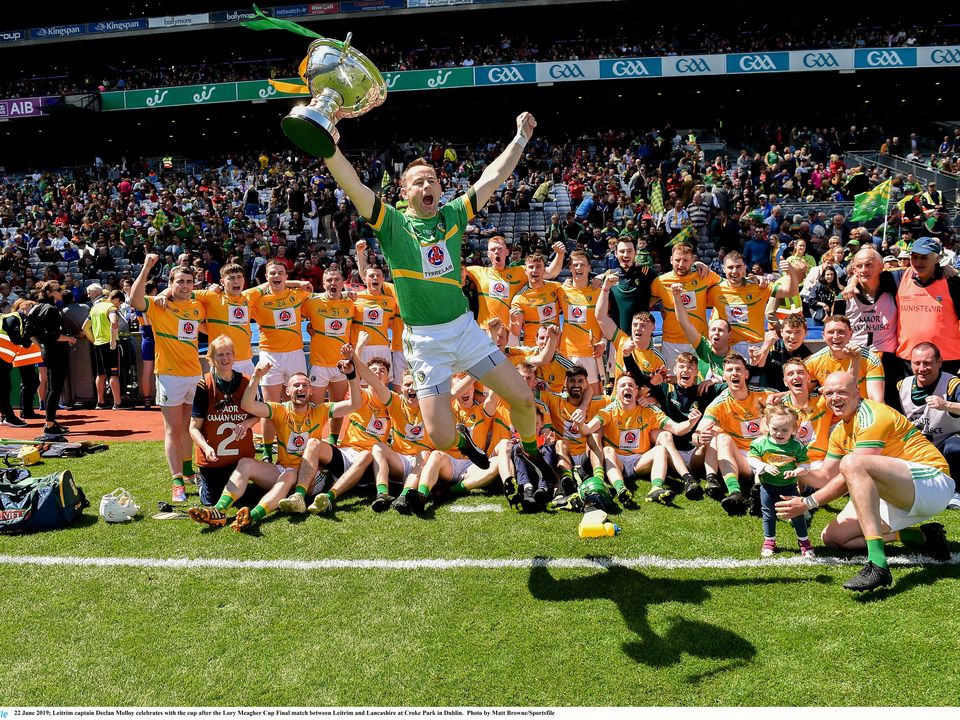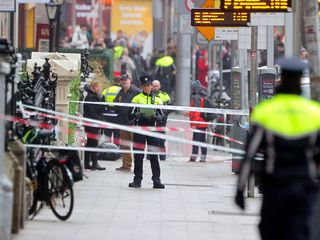- Home >
- Sport >
- Columnists
GAA Boards face money meltdown unless Croke Park intervenes
Leitrim captain Declan Molloy celebrates with the cup after the Lory Meagher Cup Final match between Leitrim and Lancashire at Croke Park in Dublin. Photo by Matt Browne/Sportsfile
HURLING MAN can relax again – the great game has been saved.
It now improbable that the GAA Central Council will back a move to drop Leitrim, Louth, Fermanagh, Cavan and Longford from the 2025 Hurling League.
Though their disdain of the GAA Players’ Association runs deep, members of the Central Council can hardy back the plan given that Fermanagh, Cavan and Longford have indicated they are voting against it at a meeting on Saturday week.
So, hurling will have been saved in these counties and everybody can go away and enjoy Christmas.
This fairy tale ending won’t last the 12 days of the festive season.
Here’s a prediction: counties will start pulling out of the National Hurling league within two seasons.
And if Kilkenny can get away without fielding a team in the National football League then the GAA will be powerless to take action against counties who ignore its hurling counterpart.
Ultimately hurling will not survive in at least half a dozen counties unless there is a significant investment in coaching at underage level. But County Boards don’t have the financial resources to employ the personnel needed.
But it is not just the future of hurling which is at stake in a handful of counties in the west and midland border regions. The entire GAA project could collapse before the end of the decade unless there is an overhaul of how the GAA distribute their finances.
In case you missed it here is what the Leitrim GAA Board Treasurer Martin McCartin told me last week.
“The Leitrim GAA project is unsustainable if Croke Park does not look at how they distribute revenue to counties.
“If counties like Leitrim are obliged to support the GPA/GAA agreements in terms of paying 70 cents per mile in travelling expenses and other elements in the deal, we will not be competing in the Tailteann Cup within a couple of years.”
The new Players’ Charter agreed between Croke Park and the GPA has been a game changer for smaller county board based more than 100km away from the capital city.
In Leitrim’s case travelling expenses are a huge drain on financial resources as a significant percentage of their county players in both codes are based outside the county.
A Dublin-based player travelling to the Leitrim Centre of Excellence in Annaduff for three training sessions per week for 30 weeks is entitled to claim €6,652 In travelling expenses based on a 70 cent per mile rate this year.
This season the Board’s bill for players’ travelling expenses was £187,000. The net cost to the Board was £110,00 because under a special deal negotiated with Croke Park – which also applies to Longford, Cavan, and Fermanagh – under which the GAA reimburse 40 percent of the cost (28 cent per mile). Croke Park reimburse the other counties 30 percent (21 cent per mile) of their expenditure on players’ travelling expenses.
The Leitrim GAA Board stay in the black due to the generously of their fans at home and abroad. This year they raised €376,748 but this is not sustainable into the future.
On the day I spoke to McCartin the Dublin GAA Board unveiled a new sponsorship deal with Staycity which is reported to be worth an annual net figure of €1m to the board. They might be under the same umbrella but Dublin and Leitrim GAA operate in a different universe when it comes to finance.
With a bit of imaginable thinking on the part of the GAA hierarchy the problem facing the financial weaker County Board could be resolved.
For starters both Croke Park and in particular the Gaelic Players Association must recognise their all-in-one agreements will put some County Boards out of business.
There has to be some flexibility in these deals. For example, if the County Board hire a bus to bring players from Dublin to training, players must be willing to forfeit their travelling expenses and travel on the bus.
But the long-term solution lies in the creation of a national fund based on a levy of each county’s commercial income which would then be used by Croke Park to pay the bulk of players’ travelling expenses.
Don’t forget that within a year female footballers and camogie players are likely to be entitled to claim travelling expenses at the same rate as their male encounter parts. Who will pay for this?
Last year the combined commercial income of Dublin, Cork and Wexford, the top three earning counties, was €3.6m.
If the GAA imposed a levy of fifteen per cent levy on the commercial revenue of all the County Boards to fund the travelling expenses of players it would protect the financial well-being of County Boards.
Otherwise, the GAA as we know it will unravel very quickly. Croke Park cannot act as a financial Red Adair to half the country’s County Boards.


























.jpg)















